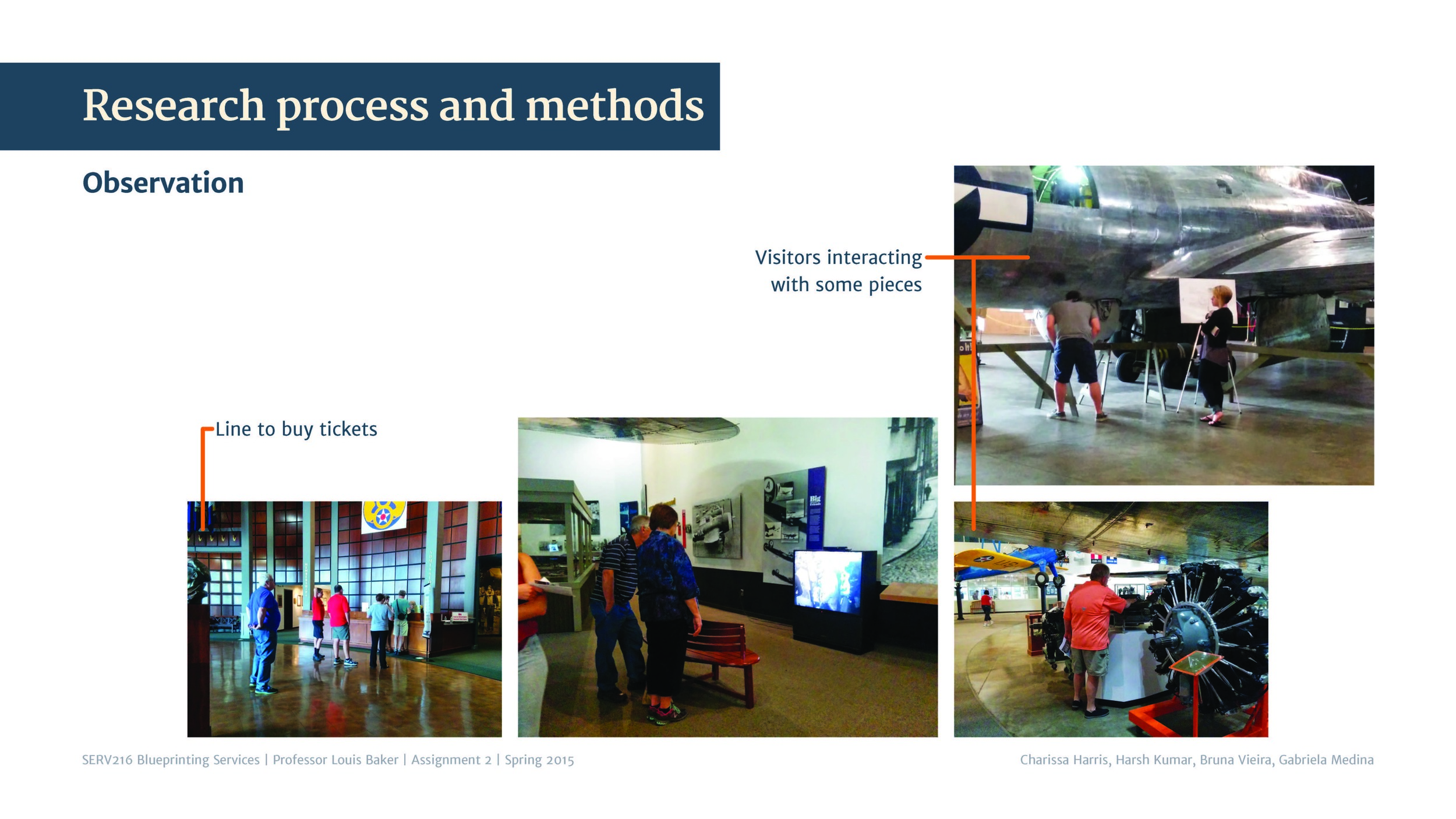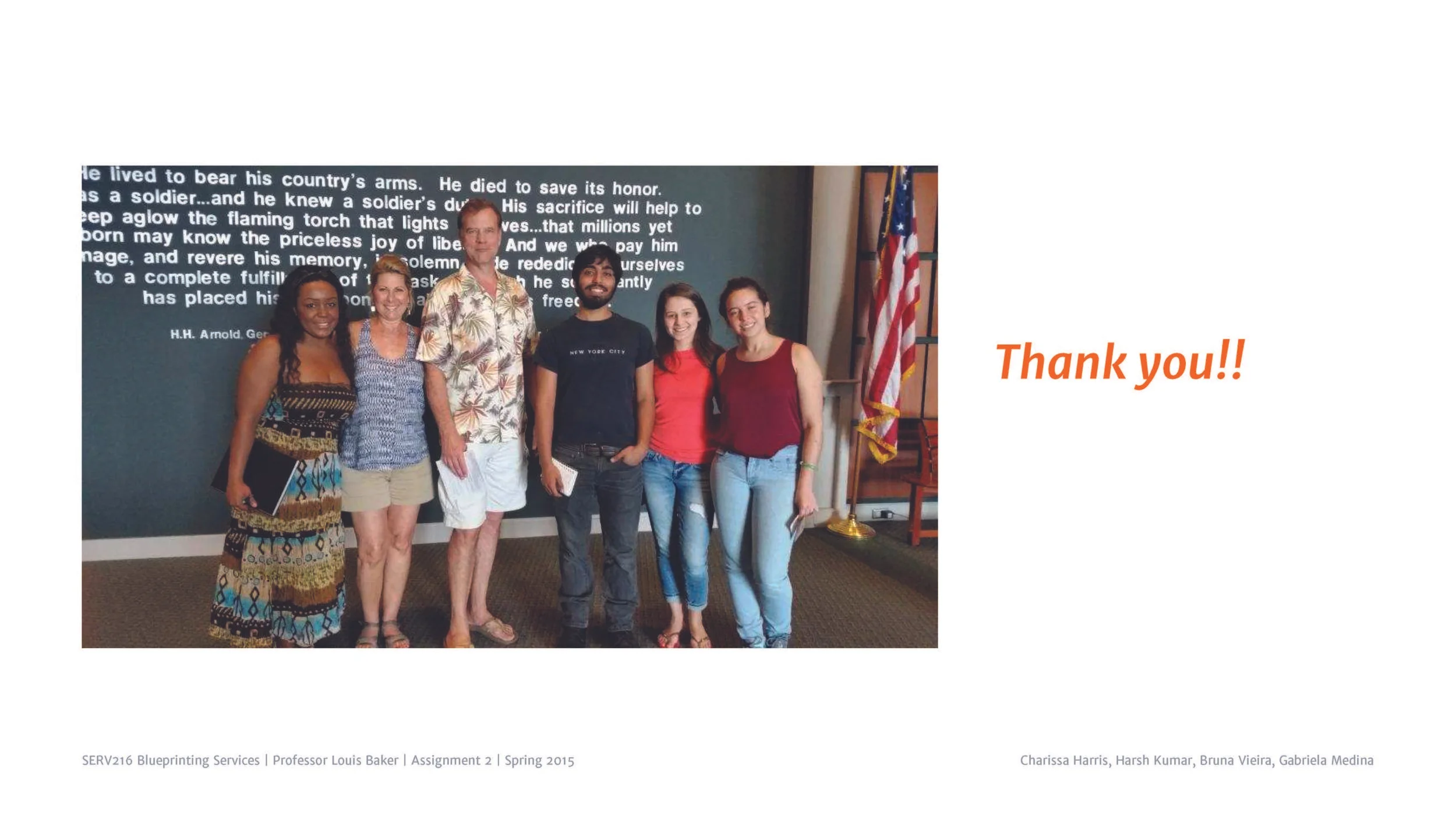SHADOWING
National Museum of the Mighty Eighth Air Force
Problem
Each team was asked to conduct field research at The National Museum of the Mighty Eighth Air Force to help understand the experiences of museum-goers. For this, they employed a technique called shadowing.
Approach
Before beginning it was important to clarify researcher status and boundaries with the participants. Students were required to gain permission before shadowing museum-goers. Like shadows the researchers were to inconspicuously observe the participant’s behavior and understand their processes and experiences over time as they browsed through the physical spaces of the museum. The shadowing lasted only 45-minutes, or up to 2 hours. It included contextual interviews at critical moments (e.g., when a customer had a problem or someone used an interesting workaround).
Solution
Documenting their experience and observations they mapped interconnected service environments/zones and identified key customer flows. They were also expected to include user stories/reviews in their ethnographic approach as well as explore frameworks that helped them to identify and explain market segmentation/target groups. They presented their observations and insights using the following frameworks:
contextual interviews: user stories
observation
AEIOU (Activities, Environment, Interactions, Objects, Users)
service encounter map
stakeholder map
service environment: bubble diagram
target groups: bi-polar maps
personas
user scenarios
service blueprint
Result
My students learned that Shadowing enables researchers to gain an in-depth understanding of experiences from the participants’ perspective. It may reveal insights researchers won’t find with mere interviews—either because participants do not tell the truth (e.g., due to social pressure) or simply because they are not aware of their own behavior.























